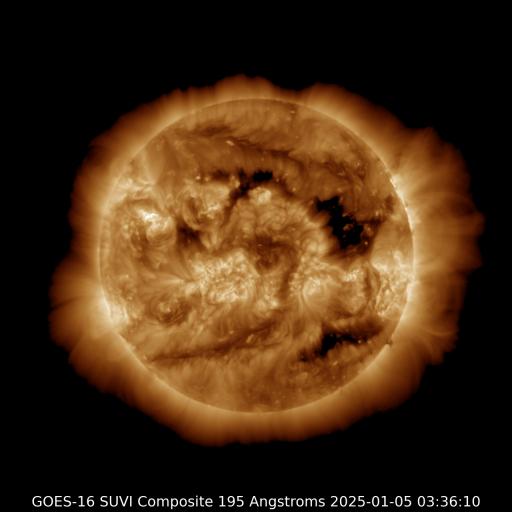Viewing archive of Tuesday, 22 September 2020
Daily bulletin on solar and geomagnetic activity from the SIDC
Issued: 2020 Sep 22 1231 UTC
SIDC Forecast
Solar flares
Quiet conditions (<50% probability of C-class flares)
Geomagnetism
Quiet (A<20 and K<4)
Solar protons
Quiet
| 10cm flux | Ap | |
|---|---|---|
| 22 Sep 2020 | 071 | 005 |
| 23 Sep 2020 | 073 | 007 |
| 24 Sep 2020 | 075 | 013 |
Bulletin
The Sun is still spotless, as the active region rotating into view over the east limb has shown no sunspots. It produced numerous B-class flares over the past 24 hours, with the largest being a B4.3 flare peaking at 12:42 UT on September 21. More B-flares can be expected, there are minor chances of having C-class flares.
No Earth-directed Coronal Mass Ejections (CMEs) were observed in available coronagraphic imagery.
The greater than 10 MeV proton flux was at nominal levels in the past 24 hours, and is expected to stay at nominal levels in the next 24 hours. The greater than 2 MeV electron flux was at nominal levels in the past 24 hours, and is expected to stay at nominal levels in the next 24 hours.
Solar wind speed near Earth as registered by DSCOVR varied between about 300 and 350 km/s in the past 24 hours. The Interplanetary Magnetic Field (IMF) was oriented towards the Sun (negative) with a magnitude between 3 nT and 9 nT. Bz reached -6 nT.
Quiet to unsettled geomagnetic conditions (K Dourbes between 0 and 3; NOAA Kp between 0 and 3) were registered in the past 24 hours. Quiet to unsettled geomagnetic levels (K Dourbes < 4) are expected for the next 48 hours. The solar wind coming from the low latitude extension of the northern polar coronal hole may affect the Earth in about 48 hours, that could lead to an increase in geomagnetic levels.
Today's estimated international sunspot number (ISN): 000, based on 21 stations.Solar indices for 21 Sep 2020
| Wolf number Catania | 000 |
| 10cm solar flux | 071 |
| AK Chambon La Forêt | 009 |
| AK Wingst | 003 |
| Estimated Ap | 002 |
| Estimated international sunspot number | 000 - Based on 35 stations |
Noticeable events summary
| Day | Begin | Max | End | Loc | Strength | OP | 10cm | Catania/NOAA | Radio burst types | |
|---|---|---|---|---|---|---|---|---|---|---|
| None | ||||||||||
Provided by the Solar Influences Data analysis Center© - SIDC - Processed by SpaceWeatherLive
All times in UTC
Current data suggests there is a slight possibility for aurora to appear at the following high latitude regions in the near future
Fairbanks, AKLatest news
Latest forum messages
Support SpaceWeatherLive.com!
A lot of people come to SpaceWeatherLive to follow the Sun's activity or if there is aurora to be seen, but with more traffic comes higher server costs. Consider a donation if you enjoy SpaceWeatherLive so we can keep the website online!

Latest alerts
06:30 UTC - Type II Radio Emission
Begin Time: 08/04/2025 05:53 UTC Estimated Velocity: 456km/sec.
05:15 UTC - Hemispheric Power Index
The OVATION model predicts the Hemispheric Power Index to reach 50GW at 06:02 UTC
00:55 UTC - Coronal hole
A southern hemisphere coronal hole is facing Earth. Enhanced solar wind could arrive in ~3 days
Monday, 7 April 2025
20:45 UTC - Geomagnetic activity
Active geomagnetic conditions (Kp4) Threshold Reached: 20:39 UTC
17:33 UTC - Hemispheric Power Index
The OVATION model predicts the Hemispheric Power Index to reach 51GW at 18:18 UTC
Space weather facts
| Last X-flare | 2025/03/28 | X1.1 |
| Last M-flare | 2025/04/05 | M1.0 |
| Last geomagnetic storm | 2025/04/06 | Kp5 (G1) |
| Spotless days | |
|---|---|
| Last spotless day | 2022/06/08 |
| Monthly mean Sunspot Number | |
|---|---|
| March 2025 | 134.2 -20.4 |
| April 2025 | 151.3 +17.1 |
| Last 30 days | 135.2 -4.5 |




